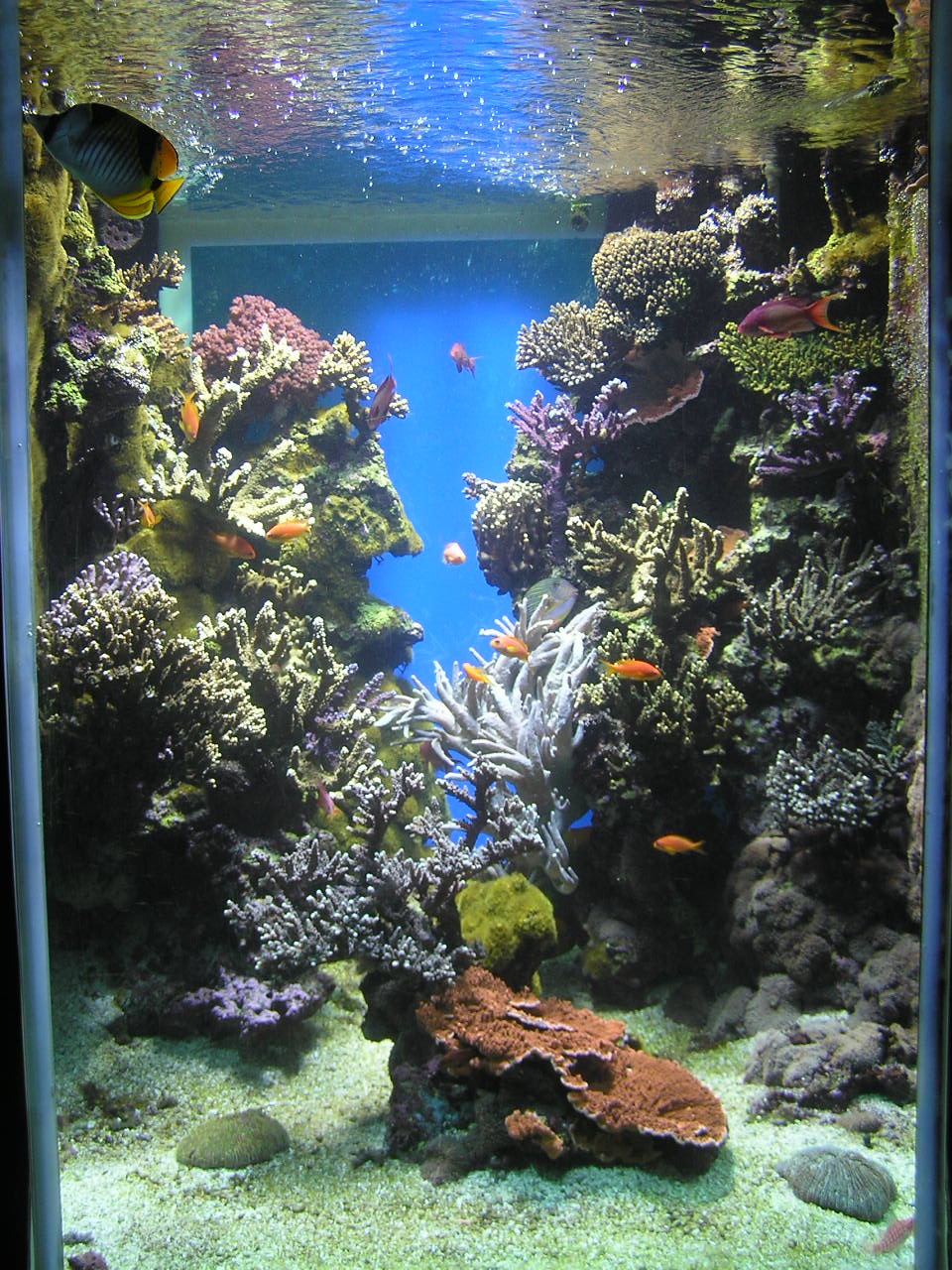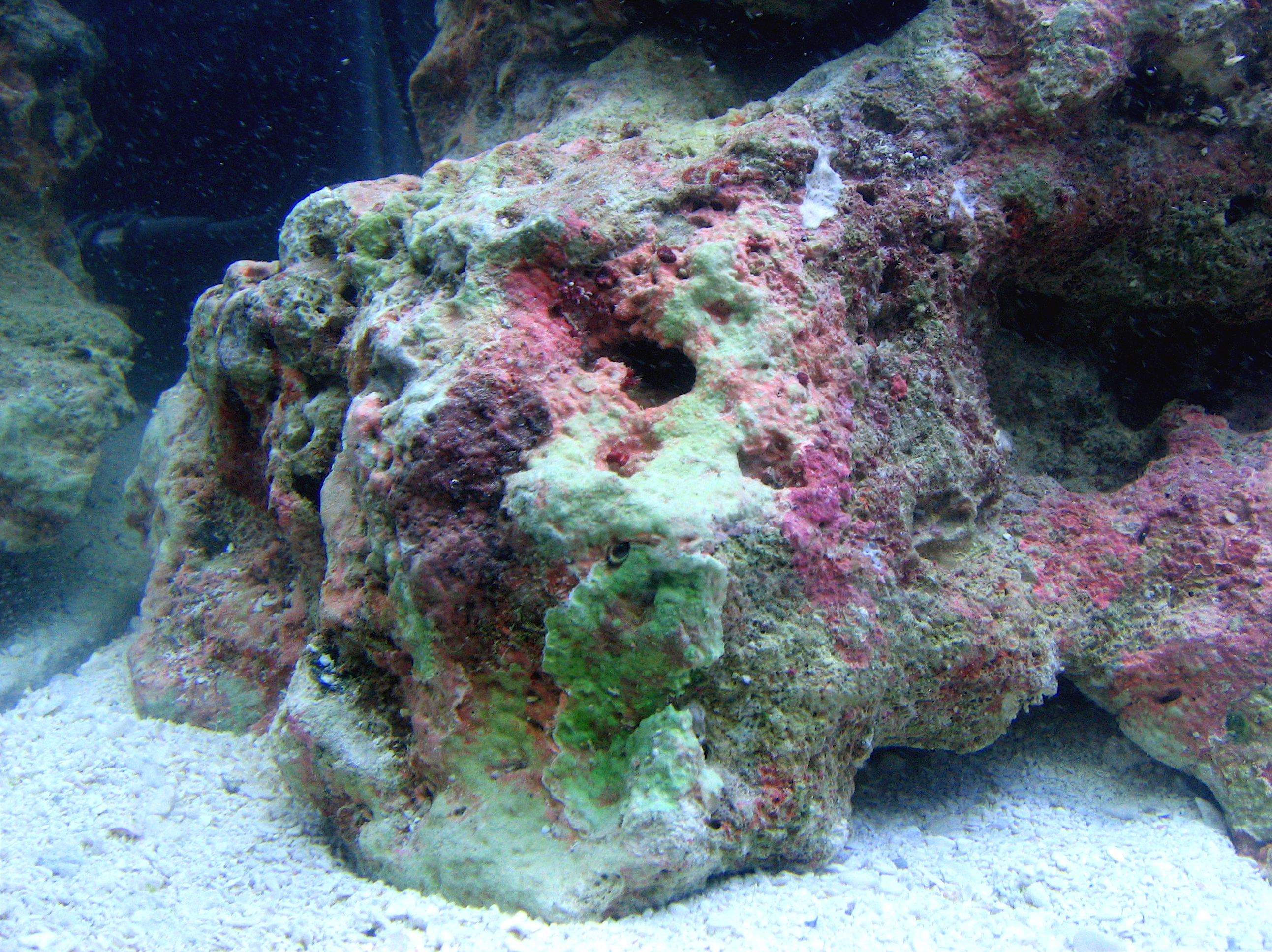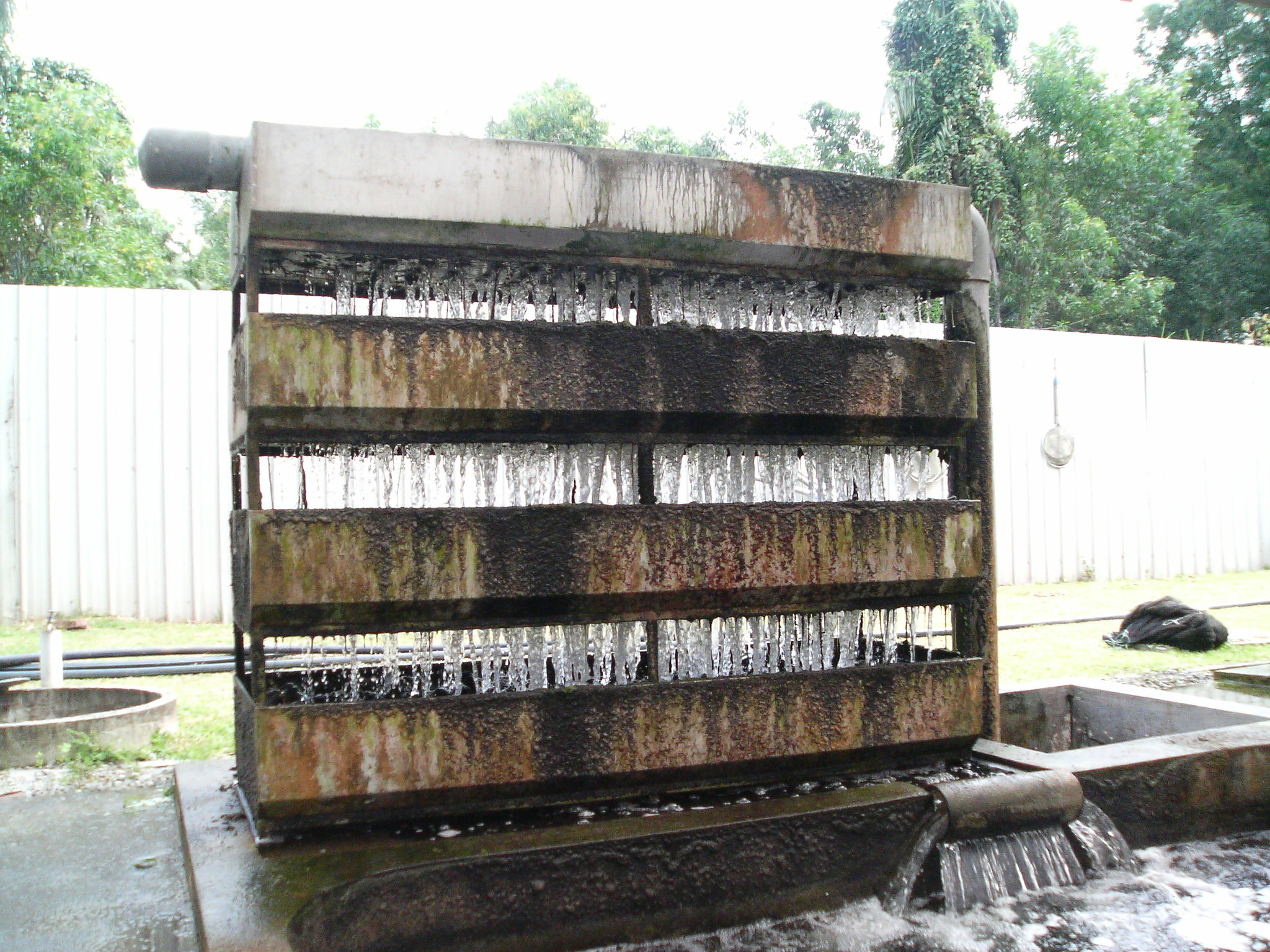|
Live Sand
Live sand, a term used in aquarism, is natural reef coral sand populated with millions of beneficial bacteria and organisms which aid in the dissolving of organic wastes like ammonia, nitrites and nitrates produced by larger organisms in saltwater aquariums. Live sand can be purchased from aquarium stores, but most hobbyists make their own by seeding dead sand with live sand from other aquarium systems. See also * Filter (aquarium) * Live rock * Reef aquarium * Sand Sand is a granular material composed of finely divided mineral particles. Sand has various compositions but is defined by its grain size. Sand grains are smaller than gravel and coarser than silt. Sand can also refer to a textural class o ... Further reading * ''Advanced Marine Aquarium Techniques'', by Jay Hemdal Fishkeeping Aquariums {{fishkeeping-stub ... [...More Info...] [...Related Items...] OR: [Wikipedia] [Google] [Baidu] |
Aquarism
Fishkeeping is a popular hobby, practiced by aquarists, concerned with keeping fish in a home aquarium or garden pond. There is also a piscicultural fishkeeping industry, serving as a branch of agriculture. Origins of fishkeeping Fish have been raised as food in pools and ponds for thousands of years. Brightly colored or tame specimens of fish in these pools have sometimes been valued as pets rather than food. Many cultures, ancient and modern, have kept fish for both functional and decorative purposes. Ancient Sumerians kept wild-caught fish in ponds, before preparing them for meals. Depictions of the sacred fish of Oxyrhynchus kept in captivity in rectangular temple pools have been found in ancient Egyptian art. Similarly, Asia has experienced a long history of stocking rice paddies with freshwater fish suitable for eating, including various types of catfish and cyprinid. Selective breeding of carp into today's popular and completely domesticated koi and fancy goldfish be ... [...More Info...] [...Related Items...] OR: [Wikipedia] [Google] [Baidu] |
Nitrates
Nitrate is a polyatomic ion with the chemical formula . Salts containing this ion are called nitrates. Nitrates are common components of fertilizers and explosives. Almost all inorganic nitrates are soluble in water. An example of an insoluble nitrate is bismuth oxynitrate. Structure The ion is the conjugate base of nitric acid, consisting of one central nitrogen atom surrounded by three identically bonded oxygen atoms in a trigonal planar arrangement. The nitrate ion carries a formal charge of −1. This charge results from a combination formal charge in which each of the three oxygens carries a − charge, whereas the nitrogen carries a +1 charge, all these adding up to formal charge of the polyatomic nitrate ion. This arrangement is commonly used as an example of resonance. Like the isoelectronic carbonate ion, the nitrate ion can be represented by resonance structures: Dietary nitrate A rich source of inorganic nitrate in the human diets come from leafy green foods ... [...More Info...] [...Related Items...] OR: [Wikipedia] [Google] [Baidu] |
Sand
Sand is a granular material composed of finely divided mineral particles. Sand has various compositions but is defined by its grain size. Sand grains are smaller than gravel and coarser than silt. Sand can also refer to a textural class of soil or soil type; i.e., a soil containing more than 85 percent sand-sized particles by mass. The composition of sand varies, depending on the local rock sources and conditions, but the most common constituent of sand in inland continental settings and non-tropical coastal settings is silica (silicon dioxide, or SiO2), usually in the form of quartz. Calcium carbonate is the second most common type of sand, for example, aragonite, which has mostly been created, over the past 500million years, by various forms of life, like coral and shellfish. For example, it is the primary form of sand apparent in areas where reefs have dominated the ecosystem for millions of years like the Caribbean. Somewhat more rarely, sand may be composed of calciu ... [...More Info...] [...Related Items...] OR: [Wikipedia] [Google] [Baidu] |
Reef Aquarium
A reef aquarium or reef tank is a marine aquarium that prominently displays live corals and other marine invertebrates as well as fish that play a role in maintaining the tropical coral reef environment. A reef aquarium requires appropriately intense lighting, turbulent water movement, and more stable water chemistry than fish-only marine aquaria, and careful consideration is given to which reef animals are appropriate and compatible with each other. Components Reef aquariums consist of a number of components, in addition to the livestock, including: *Display tank: The primary tank in which the livestock are kept and shown. *Stand: A stand allows for placement of the display tank at eye level and provides space for storage of the accessory components. *Sump: An accessory tank in which mechanical equipment is kept. A remote sump allows for a clutter-free display tank. *Refugium: An accessory tank dedicated to the cultivation of beneficial macroalgae and microflora/fauna. The re ... [...More Info...] [...Related Items...] OR: [Wikipedia] [Google] [Baidu] |
Live Rock
Live rock is rock from the ocean that has been introduced into a saltwater aquarium. Along with live sand, it confers to the closed marine system multiple benefits desired by the saltwater aquarium hobbyist. The name sometimes leads to misunderstandings, as the "live rock" itself is not actually alive, but rather is simply made from the aragonite skeletons of long dead corals, or other calcareous organisms, which in the ocean form the majority of coral reefs. When taken from the ocean it is usually encrusted with coralline algae and inhabited by a multitude of marine organisms. The many forms of micro and macroscopic marine life that live on and inside of the rock, which acts as an ideal habitat, give it the name "live rock". Origin Live rock is harvested for use in the aquarium from reefs, either from natural or human breakage. It may also be "seeded" from small coralline rocks by an aquaculturalist in warm ocean water, to be harvested later. Live rock can also be seeded by add ... [...More Info...] [...Related Items...] OR: [Wikipedia] [Google] [Baidu] |
Filter (aquarium)
Aquarium filters are critical components of both freshwater and marine aquaria.Leibel WS (1993) ''A fishkeepers guide to South American cichlids.'' Tetra Press. Belgium pg 12-14. Aquarium filters remove physical and soluble chemical waste products from aquaria, simplifying maintenance. Furthermore, aquarium filters are necessary to support life as aquaria are relatively small, closed volumes of water compared to the natural environment of most fish.Sands D (1994) ''A fishkeepers guide to Central American cichlids.'' Tetra Press. Belgium pg 17-19. Overview Animals, typically fish, kept in fish tanks produce waste from excrement and respiration. Another source of waste is uneaten food or plants and fish which have died. These waste products collect in the tanks and contaminate the water. As the degree of contamination rises, the risk to the health of the aquaria increases and removal of the contamination becomes critical. Filtration is a common method used for maintenance of hea ... [...More Info...] [...Related Items...] OR: [Wikipedia] [Google] [Baidu] |
Dead Sand
Dead sand, a term used in aquarism that refers to sand that has not been populated by beneficial bacteria and other organisms unlike live sand Live sand, a term used in aquarism, is natural reef coral sand populated with millions of beneficial bacteria and organisms which aid in the dissolving of organic wastes like ammonia, nitrites and nitrates produced by larger organisms in saltwater .... References Fishkeeping Aquariums {{Fishkeeping-stub ... [...More Info...] [...Related Items...] OR: [Wikipedia] [Google] [Baidu] |
Saltwater Aquarium
A marine aquarium is an aquarium that keeps marine plants and animals in a contained environment. Marine aquaria are further subdivided by hobbyists into fish only (FO), fish only with live rock (FOWLR), and reef aquaria. Fish only tanks often showcase large or aggressive marine fish species and generally rely on mechanical and chemical filtration. FOWLR and reef tanks use live rock, a material composed of coral skeletons harboring beneficial nitrogen waste metabolizing bacteria, as a means of more natural biological filtration. Marine fishkeeping is different from its freshwater counterpart because of the fundamental differences in the constitution of saltwater and the resulting differences in the adaptation of its inhabitants. A stable marine aquarium requires more equipment than freshwater systems, and generally requires more stringent water quality monitoring. The inhabitants of a marine aquarium are often difficult to acquire and are usually more expensive than freshwater aqu ... [...More Info...] [...Related Items...] OR: [Wikipedia] [Google] [Baidu] |
Nitrites
The nitrite ion has the chemical formula . Nitrite (mostly sodium nitrite) is widely used throughout chemical and pharmaceutical industries. The nitrite anion is a pervasive intermediate in the nitrogen cycle in nature. The name nitrite also refers to organic compounds having the –ONO group, which are esters of nitrous acid. Production Sodium nitrite is made industrially by passing a mixture of nitrogen oxides into aqueous sodium hydroxide or sodium carbonate solution: : The product is purified by recrystallization. Alkali metal nitrites are thermally stable up to and beyond their melting point (441 °C for KNO2). Ammonium nitrite can be made from dinitrogen trioxide, N2O3, which is formally the anhydride of nitrous acid: :2 NH3 + H2O + N2O3 → 2 NH4NO2 Structure The nitrite ion has a symmetrical structure (C2v symmetry), with both N–O bonds having equal length and a bond angle of about 115°. In valence bond theory, it is described as a resonance hybrid with equal ... [...More Info...] [...Related Items...] OR: [Wikipedia] [Google] [Baidu] |
Coral Reef
A coral reef is an underwater ecosystem characterized by reef-building corals. Reefs are formed of colonies of coral polyps held together by calcium carbonate. Most coral reefs are built from stony corals, whose polyps cluster in groups. Coral belongs to the class Anthozoa in the animal phylum Cnidaria, which includes sea anemones and jellyfish. Unlike sea anemones, corals secrete hard carbonate exoskeletons that support and protect the coral. Most reefs grow best in warm, shallow, clear, sunny and agitated water. Coral reefs first appeared 485 million years ago, at the dawn of the Early Ordovician, displacing the microbial and sponge reefs of the Cambrian. Sometimes called ''rainforests of the sea'', shallow coral reefs form some of Earth's most diverse ecosystems. They occupy less than 0.1% of the world's ocean area, about half the area of France, yet they provide a home for at least 25% of all marine species, including fish, mollusks, worms, crustaceans, echinoderms, sp ... [...More Info...] [...Related Items...] OR: [Wikipedia] [Google] [Baidu] |
Ammonia
Ammonia is an inorganic compound of nitrogen and hydrogen with the formula . A stable binary hydride, and the simplest pnictogen hydride, ammonia is a colourless gas with a distinct pungent smell. Biologically, it is a common nitrogenous waste, particularly among aquatic organisms, and it contributes significantly to the nutritional needs of terrestrial organisms by serving as a precursor to 45% of the world's food and fertilizers. Around 70% of ammonia is used to make fertilisers in various forms and composition, such as urea and Diammonium phosphate. Ammonia in pure form is also applied directly into the soil. Ammonia, either directly or indirectly, is also a building block for the synthesis of many pharmaceutical products and is used in many commercial cleaning products. It is mainly collected by downward displacement of both air and water. Although common in nature—both terrestrially and in the outer planets of the Solar System—and in wide use, ammonia is both caust ... [...More Info...] [...Related Items...] OR: [Wikipedia] [Google] [Baidu] |
Waste
Waste (or wastes) are unwanted or unusable materials. Waste is any substance discarded after primary use, or is worthless, defective and of no use. A by-product, by contrast is a joint product of relatively minor economic value. A waste product may become a by-product, joint product or resource through an invention that raises a waste product's value above zero. Examples include municipal solid waste (household trash/refuse), hazardous waste, wastewater (such as sewage, which contains bodily wastes ( feces and urine) and surface runoff), radioactive waste, and others. Definitions What constitutes waste depends on the eye of the beholder; one person's waste can be a resource for another person. Though waste is a physical object, its generation is a physical and psychological process. The definitions used by various agencies are as below. United Nations Environment Program According to the Basel Convention on the Control of Transboundary Movements of Hazardous Wastes a ... [...More Info...] [...Related Items...] OR: [Wikipedia] [Google] [Baidu] |







-3D-balls.png)
